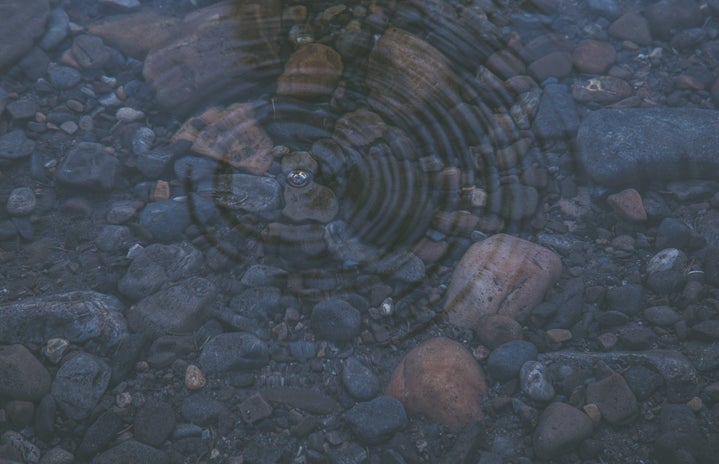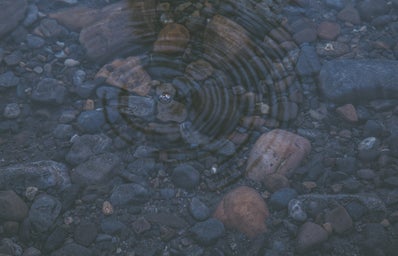We all have ways of beating college madness. Some listen to music, others cuddle up with a good book, some of us binge on Netflix, and some max out our credit cards. Some of us though, have the special privilege of being able to beat the madness with ASMR. Don‘t worry, it‘s not a drug, not an illness, and it‘s not even that complex. It’s a series of feelings and reactions to stimuli, which will be explained more in depth below. But not everyone is ASMR sensitive, and science isn’t quite sure why yet, or even why people experience ASMR in the first place. Here’s what we do know though.
What is ASMR?
ASMR stands for Autonomous Sensory Meridian Response. Now that sounds super science-y, but really it just describes positive sensations which arise as a result of stimuli known as “triggers.” These sensations can take the form of warmth, tingling and/or “waves” which radiate (usually) from the top of the head, as well as general feelings of relaxation, euphoria, and tiredness. “Triggers” are anything that induces these sensations. Some of the most common triggers are tapping, personal attention, haircuts, pages turning, and whispers. (ASMR University) Of course, every ASMR sensitive person has their own triggers and response to those triggers. There are also two types of ASMR sensitivity : Type A and Type B. Type A sensitivity stems from internal triggers like meditation, or focussing on the idea of Type B triggers. Type B triggers are any kind of external stimulus, like the tapping, personal attention and other triggers above. Type B sensitivity tends to be more common, though some people can develop Type A sensitivity over time. Most ASMR sensitive people have their first experiences between the ages of 6-8, usually with a teacher, doctor, or friend. Now, many ASMR sensitive people turn to videos made by “ASMRtists” (creators of content, usually videos made to trigger ASMR) to experience the relaxation. (ASMR Paradise Labs)
ASMR Myths and Facts
ASMR is a sexual response. False. ASMR has nothing to do with sexual arousal. It is a completely innocent and nonsexual experience, usually focused on the head and upper body. While we don’t know the causes of ASMR sensitivity, we do know that it has nothing to do with sex. For a lot of people, ASMR just puts them to sleep!
ASMR content can only be enjoyed by ASMR sensitive people False. ASMRtists create for everybody. I can’t even tell you how many videos I have seen labeled “for people who don’t get tingles” or something along those lines. Though it is true that people who are not sensitive to ASMR won’t get the tingles or the other sensations, it can still be very calming and therapeutic to hear the white noise of tapping or to watch a video where someone is taking care of you in some way. Sometimes it’s just fun to engage with the little stories the ASMRtist creates.
ASMR sensitivity can go away True. Also known as “tingle immunity,” ASMR sensitivity can fade over time. For many, the sensation fades due to over exposure: if you watch an ASMR video every night, it’s not going to have as much of an effect on you after a while. Luckily, tingle immunity can almost always be beaten by just taking some time off from things used to trigger ASMR. This takes different amounts of time for everybody, but if you’re an ASMR person who’s sensitivity has faded, just give yourself a rest for a bit and your tingles will return. (How to Cope with ASMR Immunity)
There are more women ASMRtists than men ASMRtists. True. For what ever reason, women tend to dominate the ASMRtists’ community. While there are a plethora of options for both, I would probably estimate an almost 3:1 ratio of women to men ASMRtists on YouTube. You will also notice that their content tends to be a bit different: women tend to create a lot of videos focused on the service industry – estheticians, makeup artists, healers, hairstylists, etc. – where as the men tend to focus on more personal relationship types of videos – boyfriend or friend videos- or often times doctor videos. Both of course do a mix of most and more of these, and both do a great deal of tapping and purely sound related videos as well. Content will always depend on the individual ASMRtist, but these tend to be the trends.
What does this have to do with college madness?
Glad you asked! As I mentioned before, ASMR is a great thing for anyone to try! It’s possible that you could be ASMR sensitive and not even know it just because you haven’t encountered your triggers yet. So check some out, and they may help you reduce stress, anxiety, help you sleep, or even act as a coping mechanism – kind of like a friend behind the screen. So give them a try and see what ASMR can do for you. Below are some of my favorite ASMRtists you may want to check out, or just simply search ASMR on YouTube and find your own favorites! Happy tingles!
My favorite ASMRtists
GentleWhispering ASMR (source)
https://www.youtube.com/user/GentleWhispering
ASMR Glow (source)
https://www.youtube.com/channel/UCFmL725KKPx2URVPvH3Gp8w
ASMR Zeitgeist (source)
https://www.youtube.com/channel/UCzGEGjOCbgv9z9SF71QyI7g
Fred’s Voice ASMR (source)
https://www.youtube.com/user/WhisperMister1
ASMRrequests (source)
https://www.youtube.com/user/ASMRrequests
Sources:
http://www.asmryouready.com/how-to-cope-with-asmr-immunity/
https://asmruniversity.com/about-asmr/what-is-asmr/


